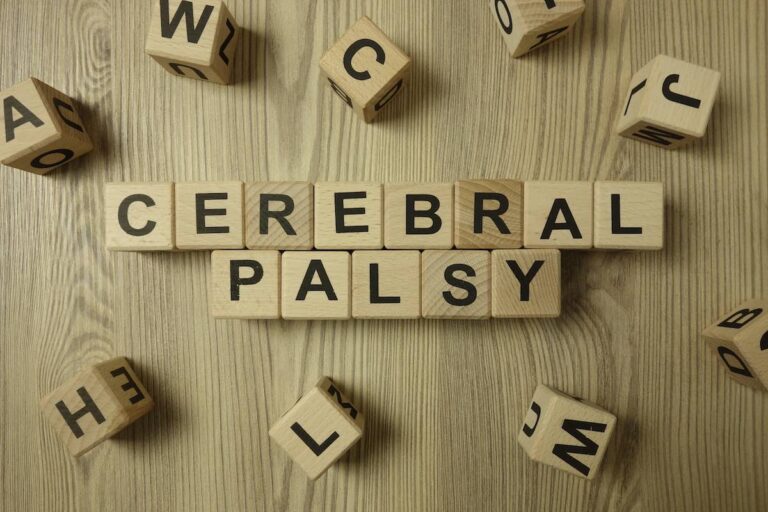
Call 24/7 for a FREE case evaluation
Call now (866) 393-4334

$100,000,000
in California case results
$20,000,000
in California jury verdicts
14
award-winning attorneys in network
Mobility challenges are present in most cerebral palsy cases. The disorder can affect any muscle group, and often results in problems involving ligaments, tendons and joints. As part of a comprehensive therapy plan, assistive technology plays a vital role treating cerebral palsy.
Assistive technology encompasses an array of items and equipment used to improve and maintain functional capabilities of disabled individuals. Cerebral palsy patients benefit from many forms of assistive innovation – from power scooters and wheelchairs, to adaptive tools for writing and eating.
Assistive, adaptive and augmentative devices help cerebral palsy patients achieve greater independence and self-confidence. Help comes in many forms. Low-tech assistive devices, for example, may make it easier for patients to grasp and manipulate items, or provide bracing support for weak joints.
High-tech equipment, on the other hand, includes state of the art mobility aids and computerized communication devices that can also assist in driving a vehicle. A custom cerebral palsy treatment plan may include the use of these aids and devices:
Orthotic devices are braces worn externally, providing support and stability for individuals facing mobility challenges. The devices may be used temporarily, to enhance a period of treatment and development, or utilized as lifelong aids for standing, walking and positioning.
According to the needs of each patient, orthotics can be used to correct and prevent:
The devices are highly customizable, made from rigid and soft materials, such as plastic, carbon fiber, rubber, leather and various metals. Orthopedic specialists and physical and occupational therapists work with patients to determine the most beneficial orthotic alternatives. Their recommendations result in custom functional orthotics, prescribed and designed for each individual.
Orthotic solutions for CP patients include these types:
According to the CDC, approximately 11% of 8 year-old cerebral palsy patients studied by the organization used a hand held device to assist mobility. A walker serves as a sturdy frame a patient holds as he or she walks.
The devices provide support and stability, giving CP patients greater independence and confidence. Various walkers meet the needs of cerebral palsy patients, including these distinct types:
Special pediatric canes help young cerebral palsy patients find balance and stability. And various adjustable and adult-sized standing and walking aids assist CP patients across a range of developmental stages.
More than 40% of CP patients exhibit limitations crawling, walking, running or playing. Crutches help patients able to walk, but need extra support. The versatile mobility aids come in two types:
Based upon the recommendation of pediatric physical therapists and other cerebral palsy specialists, standers can be beneficial for some CP patients. The mobility devices enable children with CP and other disorders to bear their own body weight, when physical limitations would otherwise prevent it.
Standing builds strength, balance and independence, so the therapeutic value of standers is widespread. Using a stander as part of a comprehensive therapy plan leads to these benefits:
Several types of standers are used in cerebral palsy therapy, including:
Lifts help cerebral palsy patients support their own weight and make transfers between devices or locations. Lifts also assist caregivers with patient transfers and positioning. These lifts may be used to improve comfort, convenience and functionality:
Wheelchairs are vital mobility aids for cerebral palsy patients with ambulatory issues. The essential devices are available as fully-manual versions or powered, electric alternatives, which can be equipped with advanced features.
Selecting the proper wheelchair accounts for several variables, including the following concerns:
Electric wheelchairs are highly customizable, offering various configurations, battery options and drive specifications. Manual wheelchairs typically fall into these classes:
This powered mobility solution comes in a three-wheeled or four-wheeled version. Mobility scooters furnish many of the advantages of powered wheelchairs, giving cerebral palsy patients another independent means of movement.
Although scooters are more affordable than cutting-edge electric wheelchairs, certain features, like head and neck support, may not be present. Upper body strength is not required to operate a mobility scooter, but users must possess coordination and control to navigate the devices.
There are numerous types of driving modifications available today, especially for people with cerebral palsy.
To find the best option for your needs, locate your nearest Mobility Dealer, such as United Access, a wheelchair accessible vehicles & equipment company with locations nationwide.
WE’RE OPEN NOW
Our staff are standing by to help you find the perfect attorney for your case.

Published: 16 May 2022